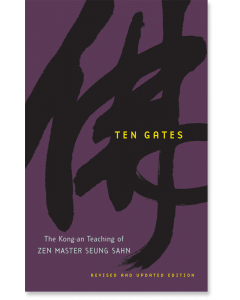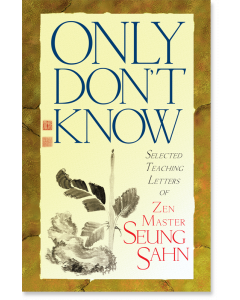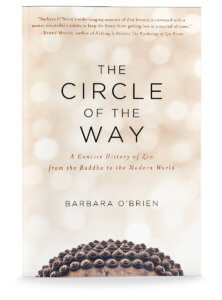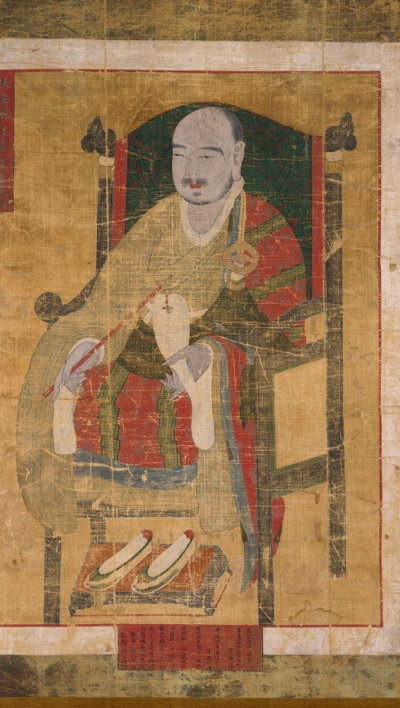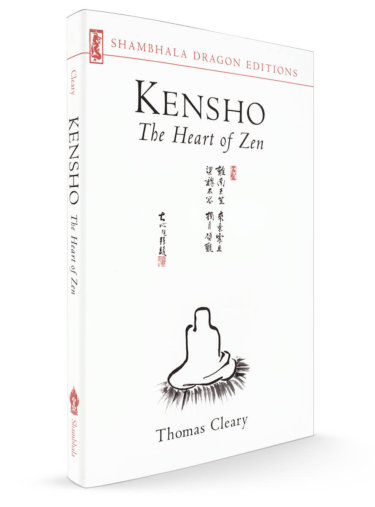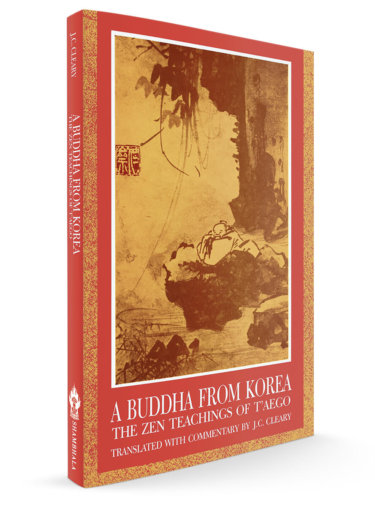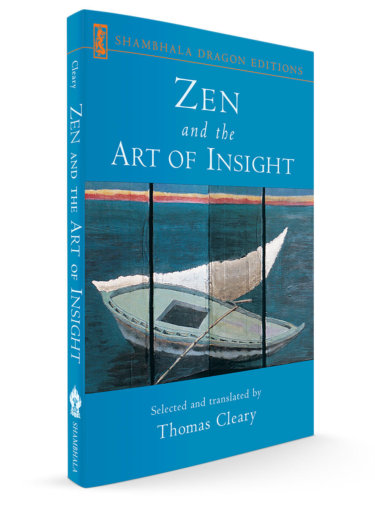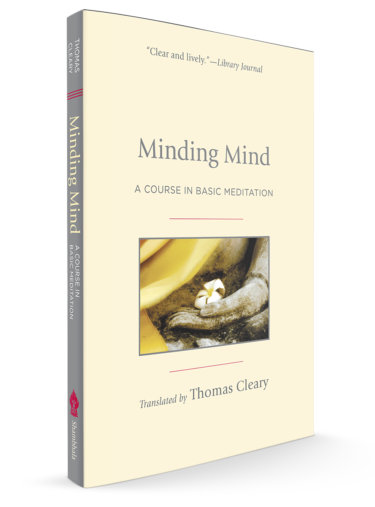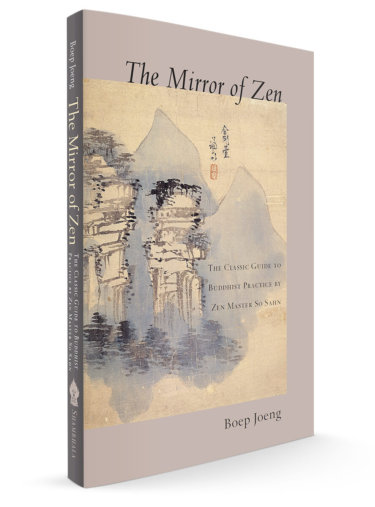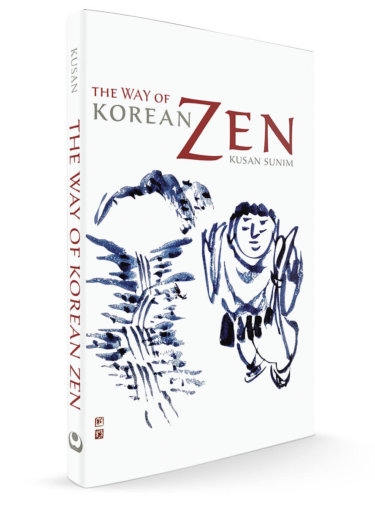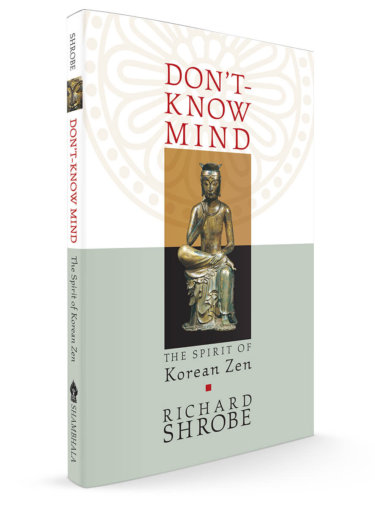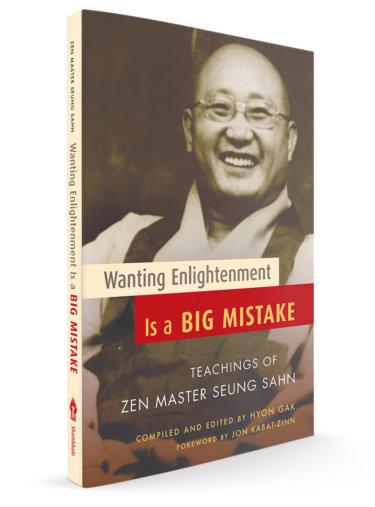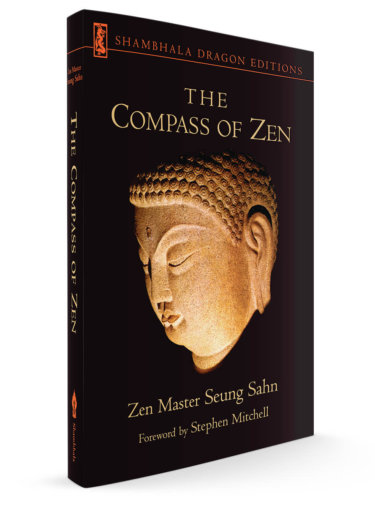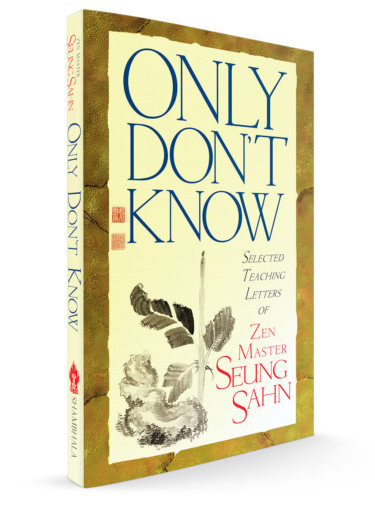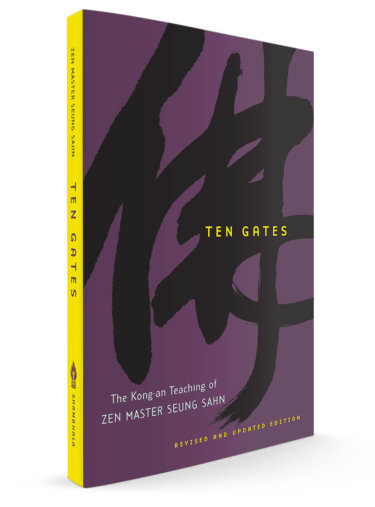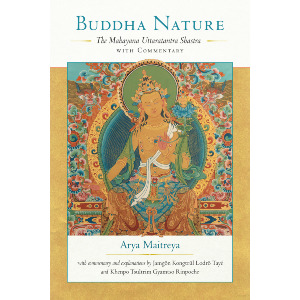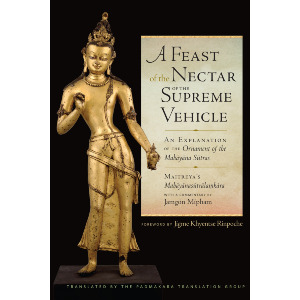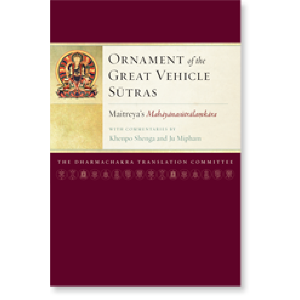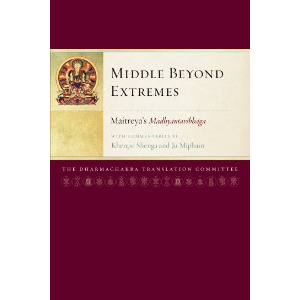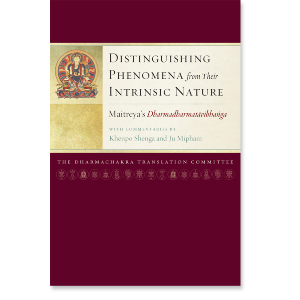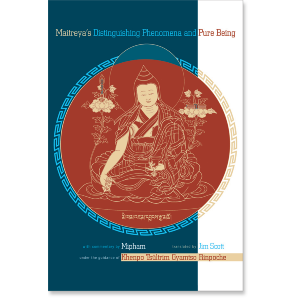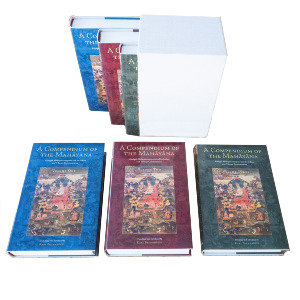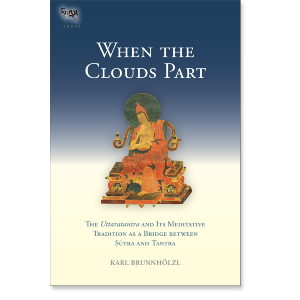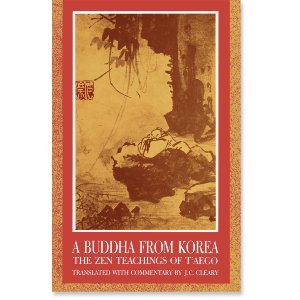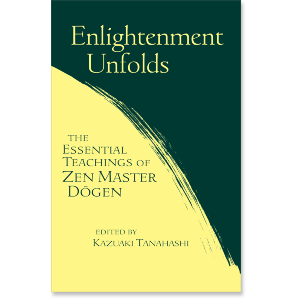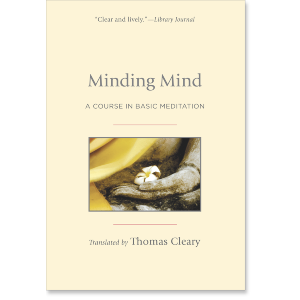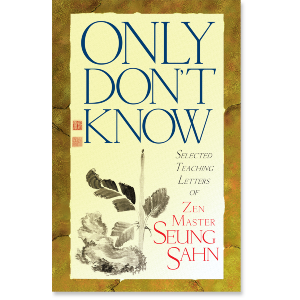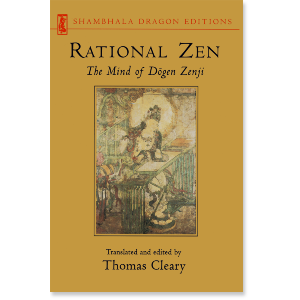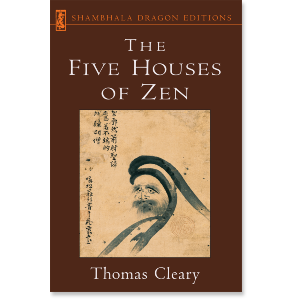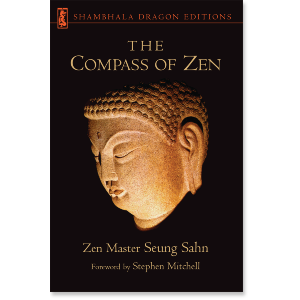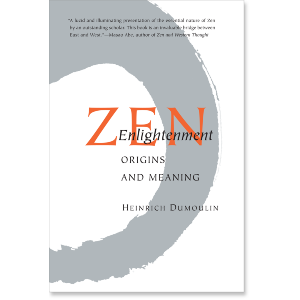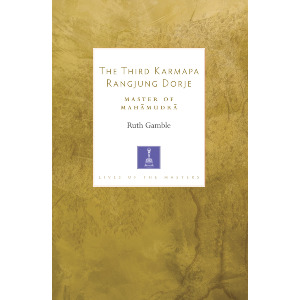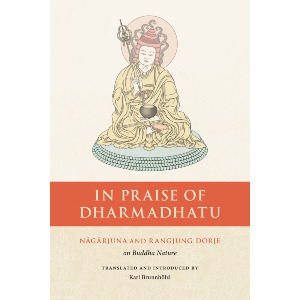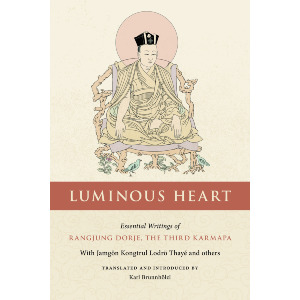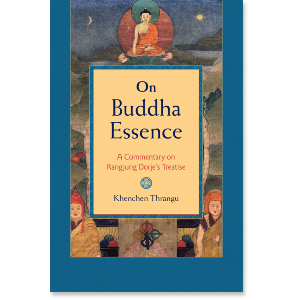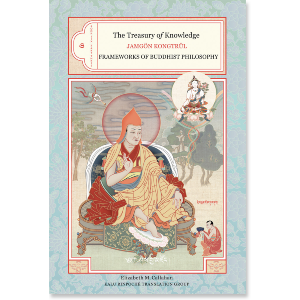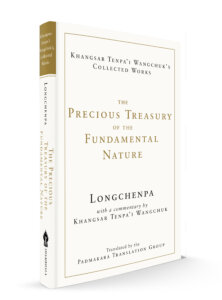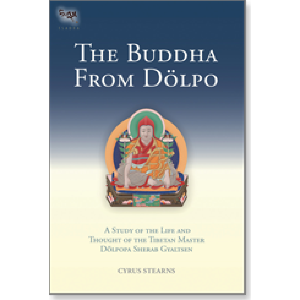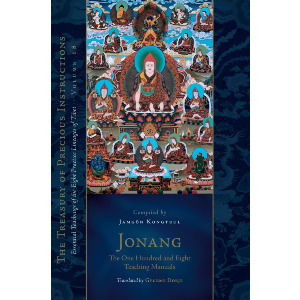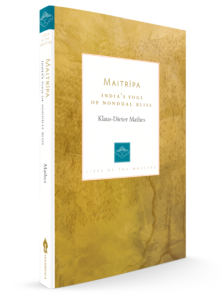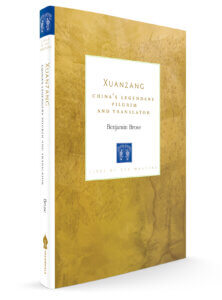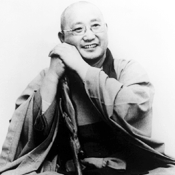

Zen Master Seung Sahn
Zen Master Seung Sahn (1927–2004) was the first teacher to bring Korean Zen Buddhism to America, having already established temples in Japan and Hong Kong. In 1972 he came to the United States and started what became the Providence Zen Center, the first center in what is now the Kwan Um School of Zen, which now includes more than eighty centers and groups worldwide. His students called him Dae Soen Sa Nim, "Great Honored Zen Teacher," and he was the 78th Zen master in his line of dharma transmission in the Chogye order of Korean Buddhism. His books include The Compass of Zen, Dropping Ashes on the Buddha, Only Don't Know, and The Whole World Is a Single Flower: 365 Kong-ans for Everyday Life.
Zen Master Seung Sahn
Zen Master Seung Sahn (1927–2004) was the first teacher to bring Korean Zen Buddhism to America, having already established temples in Japan and Hong Kong. In 1972 he came to the United States and started what became the Providence Zen Center, the first center in what is now the Kwan Um School of Zen, which now includes more than eighty centers and groups worldwide. His students called him Dae Soen Sa Nim, "Great Honored Zen Teacher," and he was the 78th Zen master in his line of dharma transmission in the Chogye order of Korean Buddhism. His books include The Compass of Zen, Dropping Ashes on the Buddha, Only Don't Know, and The Whole World Is a Single Flower: 365 Kong-ans for Everyday Life.
-
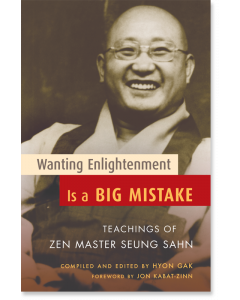 Wanting Enlightenment Is a Big Mistake$21.95- Paperback
Wanting Enlightenment Is a Big Mistake$21.95- PaperbackEdited by Hyon Gak
By Zen Master Seung Sahn
Foreword by Jon Kabat-Zinn -
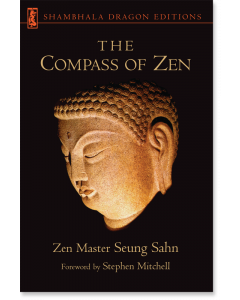 The Compass of Zen$35.00- Paperback
The Compass of Zen$35.00- PaperbackForeword by Stephen Mitchell
By Zen Master Seung Sahn
Edited by Hyon Gak
GUIDES


This is part of a series of articles on the arc of Zen thought, practice, and history, as presented in The Circle of the Way: A Concise History of Zen from the Buddha to the Modern World. You can start at the beginning of this series or simply explore from here.
Portrait of the Great Master Seosan
From the Met
Explore Zen Buddhism: A Reader's Guide to the Great Works
Overview
Chan in China
- The Works of the Chan and Zen Patriarchs
- The Works of Zen in the Tang Dynasty (618-907)
- The Works of Zen in the Song Dynasty (960 - 1279)
- The Great Koan Collections
Zen in Korea
> The Seon Tradition of Zen in Korea
Zen in Japan
- Early Zen in Japan
- Dogen: A Guide to His Works
- Rinzai Zen
- Hakuin Ekaku: A Reader's Guide
- The Samurai and Zen
- Zen in Japan up to the Meiji Restoration
Additional Resources
- The Heart Sutra: A Reader’s Guide
- Zen in the Modern World (Coming Soon)
- Foundational Sutras and Texts of Zen (Coming Soon)
- Zen and Tea
The Circle of the Way devotes a full chapter to Seon, or Korean Zen. It begins with Buddhism's arrival in Korea in the fourth century, and then continues through Buddhism's settling in during the Three Kingdoms period (Gogurye, Baekje, and Silla) which ended in the seventh century and during which multiple Zen lineages were introduced or developed. Then came the Goryo period from the tenth to fourteenth centuries, which was the golden age of Buddhism in Korea, with royal patronage and adoption. The fifteenth through twentieth centuries were marked by varying periods of suppression and consolidation of Buddhism, but also included many bright spots such as the figure Hyujeong.
Kensho is the transformative glimpse of the true nature of all things. It is an experience so crucial in Zen practice that it is sometimes compared to finding an inexhaustible treasure because it reveals the potential that exists in each moment for pure awareness free from the projections of the ego. Among the traditional Zen works are a number of important texts focusing on the profound subtleties of this essential Zen awakening and the methods used in its realization.
One of the selections is the Straightforward Explanation of the True Mind, by Korean Zen teacher Chinul (1158-1210), which provides the contextual balance needed to understand kensho by relating it to the broader teachings of the Buddhist scriptures and treatises.
A Buddha from Korea: The Zen Teachings of T'aego
A Buddha from Korea is intended to open a window on Zen Buddhism in old Korea. The book centers on a translation of teachings of the great fourteenth-century Korean Zen adept known as T'aego, who was the leading representative of Zen in his own time and place. This is an account of Zen Buddhism direct from an authentic source.
In addition to the translation, J.C. Cleary includes a great deal of fascinating context in the lengthy introduction, which describes T'aego thus:
T'aego was an outstanding Zen teacher in fourteenth-century Koryo, the National Teacher, the man from whom all the later lineages of Korean Zen claim ultimate descent. He was born in 1301 and died in 1382, after decades at work to further the Dharma. As a famous religious leader, he lived through the turbulent period when the cosmopolitan but oppressive Mongol rule over East Asia was broken, and new regimes were emerging over decades of struggle. His was the age when gunpowder weapons and firearms spread across the old world.
Early on T'aego committed himself to the Buddhist life, and over the years he lived to the full many of its characteristic roles: youthful seeker, practicing discipline and traveling to Buddhist centers to seek wisdom; dedicated mystic, approaching wisdom with the cool intensity of the practical path; mature teacher, staying a while here and there to guide people and aid their development.
This book includes selections from the Prajnaparamita literature along with Thomas Cleary's illuminating commentary, as a means of demonstrating the intrinsic limitations of discursive thought, and of pointing to the profound wisdom that lies beyond it.
One of the selections is The Essentials of the Great Scripture on Perfect Insight, a treatise by the great seventh-century Korean Buddhist author Won Hyol (aka Wonhyo).
Minding Mind: A Course in Basic Meditation
One of the meditation manuals presented here, Secrets of Cultivating the Mind, was composed by Chinul (1158–1210), founder of the Chogye order of Korean Buddhism. Ordained as a monk at the age of eight, Chinul had no teacher. His first awakening occurred as he read a Chan Buddhist classic when he was twenty-five years old. After that, Chinul went into seclusion in the mountains. Later on, he perused the whole Buddhist canon, then went back into solitude in a mountain fastness. During this period, Chinul experienced another awakening while reading the letters of one of the great Chinese masters.
Eventually Chinul began to instruct others, establishing a number of teaching centers. He attracted the attention of the Buddhist king of Koryo Korea and was honored with the title National Teacher after his passing. Based on classical teachings, Chinul’s Secrets of Cultivating the Mind is a highly accessible primer of basic Buddhist meditation, defining and contrasting the principles and methods of sudden and gradual enlightenment.
The Mirror of Zen: The Classic Guide to Buddhist Practice by Zen Master So Sahn
Zen Master So Sahn (1520–1604) is a towering figure in the history of Korean Zen. In this treasure-text, he presents in simple yet beautiful language the core principles and teachings of Zen. Each section opens with a quotation—drawn from classical scriptures, teachings, and anecdotes—followed by the author’s commentary and verse. Originally written in Chinese, the text was translated into Korean in the mid-twentieth century by the celebrated Korean monk Boep Joeng. An American Zen monk, Hyon Gak, has translated it into English.
The power and simplicity of the Korean Zen tradition shine in this collection of teachings by a renowned modern master, translated by Martine Batchelor. Kusan Sunim provides a wealth of practical advice for students, particularly with regard to the uniquely Korean practice of hwadu, or sitting with questioning. An extensive introduction by Stephen Batchelor, author of Buddhism without Beliefs, provides both a biography of the author and a brief history of Korean Zen.
Don't-Know Mind: The Spirit of Korean Zen
"Don't-know mind" is our enlightened mind before ideas, opinions, or concepts arise to create suffering. Practicing with don't-know mind has long been a central concern of Korean Zen. Here, an American Zen teacher in the Korean lineage brings the teaching to life by using stories about the Chinese and Korean Zen masters as jumping-off points for his own teaching. Don't-Know Mind is a clear, direct, and heartfelt presentation of Zen teaching applicable to anyone, both for formal practice and for all the rest of life.
Zen koans are stories of exchanges between Zen masters and their disciples at the moment of enlightenment or near-enlightenment. These stories have long fascinated Western readers because of their wisdom, humor, and enigmatic quality. Drawing on over thirty years of practice and teaching, Richard Shrobe (himself a recognized Zen Master) has selected twenty-two cases from The Blue Cliff Record, Book of Serenity, and Wu-men-kuan that he has found to be deeply meaningful and helpful for meditation practice. In Elegant Failure, he provides a wealth of background information and personal anecdotes for each koan that help to illuminate its meaning without detracting from its paradoxical nature. As Shrobe reminds us, “The main core of Zen teaching is the bare bones of what is there. In a certain sense, embellishing a story takes away from the central teaching: Don’t embellish anything, just be with it as it is.”
Korean Zen Master Seung Sahn
Zen Master Seung Sahn (1927–2004) was the first teacher to bring Korean Zen Buddhism to America, having already established temples in Japan and Hong Kong. In 1972 he came to the United States and started what became the Providence Zen Center, the first center in what is now the Kwan Um School of Zen, which now includes more than eighty centers and groups worldwide. His students called him Dae Soen Sa Nim, "Great Honored Zen Teacher," and he was the 78th Zen master in his line of dharma transmission in the Chogye order of Korean Buddhism. We have several works by this extraordinary teacher, profiled below.
Wanting Enlightenment Is a Big Mistake: Teachings of Zen Master Seung Sahn
Zen Master Seung Sahn was known for his powerful teaching style, which was direct, surprising, and often humorous. He taught that Zen is not about achieving a goal, but about acting spontaneously from “don’t-know mind.” It is from this “before-thinking” nature, he taught, that true compassion and the desire to serve others naturally arises. This collection of teaching stories, talks, and spontaneous dialogues with students offers readers a fresh and immediate encounter with one of the great Zen masters of the twentieth century
The Compass of Zen is a simple, exhaustive—and often hilarious—presentation of the essence of Zen by a modern Zen Master of considerable renown. In his many years of teaching throughout the world, the Korean-born Zen Master Seung Sahn became known for his ability to cut to the heart of Buddhist teaching in a way that is strikingly clear, yet free of esoteric and academic language. In this book, based largely on his talks, he presents the basic teachings of Buddhism and Zen in a way that is wonderfully accessible for beginners—yet so rich with stories, insights, and personal experiences that long-time meditation students will also find it a source of inspiration and a resource for study.
Only Don't Know: Selected Teaching Letters of Zen Master Seung Sahn
Here is the inimitable Zen Master Seung Sahn up close and personal—in selections from the correspondence that was one of his primary modes of teaching. Seung Sahn received hundreds of letters per month, each of which he answered personally, and some of the best of which are included here. His frank and funny style, familiar to readers of Dropping Ashes on the Buddha, is seen here in a most intimate form. The beloved Zen master not only answers questions on Zen teaching and practice, but applies an enlightened approach to problems with work, relationships, suffering, and the teacher-student relationship.
Ten Gates: The Kong-an Teaching of Zen Master Seung Sahn
Through the experience of seeing a modern Zen master work with his students, you can see what koan training is really like: It’s a skillful, lively practice for attaining wisdom.
This book presents the system of ten koans that Zen Master Seung Sahn came to call the “Ten Gates.” These koans represent the basic types one will encounter in any course of study. Each of the ten gates, or koans, is illuminated by actual interchanges between Zen Master Seung Sahn and his students that show what the practice is all about: it is above all a process of coming to trust one’s own wisdom, and of manifesting that wisdom in every koan-like situation life presents us with.
Continue to the next article in the series: Early Zen in Japan >
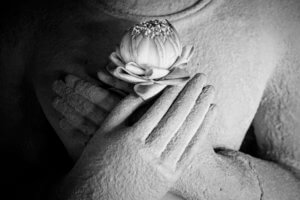
Buddha Nature: A Reader’s Guide

In the eleventh century, the great Tibetan scholar-practitioner Gampopa (1079–1153) began his composition known as The Jewel Ornament of Liberation with an exposition on the cause for awakening. What is the cause for awakening? In the Vajrayana and third turning traditions of Buddhism it is buddha nature. Buddha nature is our innate potential for awakening and the root of many Buddhist paths. Zen, Yogacara, and all Tibetan traditions of Buddhism teach that the goal of enlightenment is not some distant aspiration but is accessible in the immediate present.
Historically, the source of the buddha nature teachings can be traced back to the third turning of the Buddha’s teachings, with textual sources dating back to the 3rd and 4th century C.E. and the Indian Yogācāra tradition. This tradition follows the tenet systems laid out by the Indian masters Vasubandhu (4th–5th century) and Asaṅga (fourth century). Their writings that continue to inspire throughout the ages include the Thirty Verses, the Twenty Verses, the Treatise on the Three Natures, and the Demonstration of Action by Vasubandhu as well as other scriptures on the storehouse consciousness, buddha nature, and the perfect luminosity of the union of appearances and emptiness that were written by his contemporaries and commentators, Asaṅga, Dharmakīrti (seventh century), and Dignāga (480–540). These foundational individuals have inspired an astoundingly profound line of philosophers and commentators in the Tibetan Buddhist traditions, and their developments permeate most all other Mahāyāna centers of Buddhist practice and philosophy.
There are now many literary works that explore the topic of buddha nature, provoking the realization of enlightenment and making that realization relatable to the very essence of our lives. In one’s relationship to the spiritual path, it is important to have a sense of our potential and our innate capability to grow and progress. It is this innate strength that is reflected in the Buddha and his commentators’ teachings on our perfect buddha nature. Enjoy this wonderful lion’s roar that echoes throughout the many publications featured below.
Masters of the Yogacara Tradition
The two most prominent figures from the Indian Buddhist tradition are Asanga and Maitreya. The tradition tells that Asanga meditated in a cave for 12 years until finally Maitreya appeared to him and brought him to Tushita heaven where he received the Five Treatises of Maitreya. The Five Treatise explain the profound meaning of emptiness and luminous nature. They include:
- The Ornament of Clear Realization
- The Oranment of the Mahayana Sutras
- Distinguishing the Middle from the Extremes
- Distinguishing Dharma and Dharmata
- The Sublime Continuum
Asang's teaching on the foundation of our spiritual potency shows that there is nothing substantial to our limitations—our true state of being is never dampened by the adventitious pains clouding our experiences. It can be both inspiring, intimidating, and even shocking when first encountering the language used to express buddha nature. Especially if you are used to the common Buddhist philosophies regarding impermanence, selflessness, and suffering, the position of the third turning teachings can be jarring in its emphasis on the positive expressions of the ultimate—the descriptive qualities of the luminosity of mind.
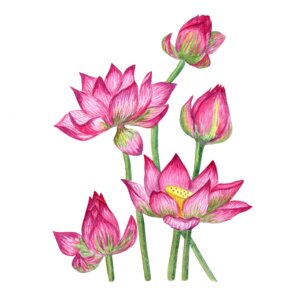
For example, in The Uttaratantrashastra Asaṅga wrote these traditional examples that capture the brilliance and purity of our essential buddha nature,
Like a lake filled with unpolluted water gradually overspread by lotus flowers,
Like the full moon released from Rahu’s mouth and the sun liberated from a sea of clouds,
It is free from affliction. Being free from pollution and possessing qualities,
[buddhahood] is endowed with the brilliant light rays [of correct and complete vision].
-From Buddha Nature: The Mahayana Uttaratantra Shastra, translated by Rosemarie Fuchs

$34.95 - Paperback
By: Rosemarie Fuchs & Asanga & Jamgon Kongtrul Lodro Taye & Khenpo Tsultrim Gyamtso & Maitreya
All sentient beings, without exception, have buddha nature—the inherent purity and perfection of the mind, untouched by changing mental states. Thus there is neither any reason for conceit nor self-contempt. This is obscured by veils that are removable and do not touch the inherent purity and perfection of the nature of the mind. The Mahayana Uttaratantra Shastra, one of the “Five Treatises” said to have been dictated to Asanga by the Bodhisattva Maitreya, presents the Buddha’s definitive teachings on how we should understand this ground of enlightenment and clarifies the nature and qualities of buddhahood. This seminal text details with great clarity the view that forms the basis for Vajrayana, and especially Mahamudra, practice.
A Feast of the Nectar of the Supreme Vehicle
$69.95 - Hardcover
By: Asanga & Jamgon Mipham & Maitreya & Padmakara Translation Group
A monumental work and Indian Buddhist classic, the Ornament of the Mahāyāna Sūtras (Mahāyānasūtrālamkāra) is a precious resource for students wishing to study in-depth the philosophy and path of Mahāyāna Buddhism. This full translation and commentary outlines the importance of Mahāyāna, the centrality of bodhicitta or the mind of awakening, the path of becoming a bodhisattva, and how one can save beings from suffering through skillful means.
This definitive composition of Mahāyāna teachings was imparted in the fourth century by Maitreya to the famous adept Asanga, one of the most prolific writers of Buddhist treatises in history. Asanga’s work, which is among the famous Five Treatises of Maitreya, has been studied, commented upon, and taught by Buddhists throughout Asia ever since it was composed.
Ornament of the Great Vehicle Sutras
$69.95 - Hardcover
By: Dharmachakra Translation Committee & Asanga & Jamgon Mipham & Maitreya & Khenpo Shenga
The Buddhist masterpiece Ornament of the Great Vehicle Sūtras, often referred to by its Sanskrit title, Mahāyānasūtrālaṃkāra, is part of a collection known as the Five Maitreya Teachings, a set of philosophical works that have become classics of the Indian Buddhist tradition. Maitreya, the Buddha’s regent, is held to have entrusted these profound and vast instructions to the master Asaṅga in the heavenly realm of Tuṣita.
The Ornament provides a comprehensive description of the bodhisattva’s view, meditation, and enlightened activities. Bodhisattvas are beings who, out of vast love for all sentient beings, have dedicated themselves to the task of becoming fully awakened buddhas, capable of helping all beings in innumerable and vast ways to become enlightened themselves. To fully awaken requires practicing great generosity, patience, energy, discipline, concentration, and wisdom, and Maitreya’s text explains what these enlightened qualities are and how to develop them.
$22.95 - Paperback
By: Dharmachakra Translation Committee & Asanga & Jamgon Mipham & Ju Mipham & Maitreya & Khenpo Shenga
Middle Beyond Extremes contains a translation of the Buddhist masterpiece Distinguishing the Middle from Extremes. This famed text, often referred to by its Sanskrit title, Madhyantavibhaga, is part of a collection known as the Five Maitreya Teachings. Maitreya is held to have entrusted these profound and vast instructions to the master Asanga in the heavenly realm of Tusita.
Distinguishing the Middle from Extremes employs the principle of the three natures to explain the way things seem to be as well as the way they actually are. It is presented here alongside commentaries by two outstanding masters of Tibet’s nonsectarian Rimé movement, Khenpo Shenga and Ju Mipham.
Distinguishing Phenomena from Their Intrinsic Nature
$24.95 - Hardcover
By: Dharmachakra Translation Committee & Asanga & Jamgon Mipham & Ju Mipham & Maitreya & Khenpo Shenga
The Buddhist masterpiece Distinguishing Phenomena from Their Intrinsic Nature, often referred to by its Sanskrit title, Dharmadharmatāvibhaṅga, is part of a collection known as the Five Maitreya Teachings, a set of philosophical works that have become classics of the Indian Buddhist tradition. Maitreya, the Buddha’s regent, is held to have entrusted these profound and vast instructions to the master Asaṅga in the heavenly realm of Tuṣita. Outlining the difference between appearance and reality, this work shows that the path to awakening involves leaving behind the inaccurate and limiting beliefs we have about ourselves and the world around us and opening ourselves to the limitless potential of our true nature.
Maitreya's Distinguishing Phenomena and Pure Being
$24.95 - Paperback
By: Asanga & Jamgon Mipham & Jim Scott
Distinguishing Phenomena and Pure Being was composed by Maitreya during the golden age of Indian Buddhism. Mipham's commentary supports Maitreya's text in a detailed analysis of how ordinary, confused consciousness can be transformed into wisdom. Easy-to-follow instructions guide the reader through the profound meditation that gradually brings about this transformation. This important and comprehensive work belongs on the bookshelf of any serious Buddhist practitioner—and indeed of anyone interested in realizing their full potential as a human being.
The Mahāyānasaṃgraha, published here with its Indian and Tibetan commentaries in three volumes, presents virtually everything anybody might want to know about the Yogācāra School of Mahāyāna Buddhism. It discusses in detail the nature and operation of the eight kinds of consciousness, the often-misunderstood notion of “mind only” (cittamātra), dependent origination, the cultivation of the path and its fruition in terms of the four wisdoms, and the three bodies (kāyas) of a buddha.
Volume 1 presents the translation of the Mahāyānasaṃgraha along with a commentary by Vasubandhu. The introduction gives an overview of the text and its Indian and Tibetan commentaries, and explains in detail two crucial elements of the Yogācāra view: the ālaya-consciousness and the afflicted mind (klistamanas).
Volume 2 presents translations of the commentary by Asvabhāva and an anonymous Indian commentary on the first chapter of the text. These translations are supplemented in the endnotes by excerpts from Tibetan commentaries and related passages in other Indian and Chinese Yogācāra works.
Volume 3 includes appendices with excerpts from other Indian and Chinese Yogācāra texts and supplementary materials on major Yogācāra topics in the Mahāyānasaṃgraha.
Including an insightful exploration in the translators introduction of the meditative tradition that uses Maitreya’s Mahāyānottaratantra as the basis for Mahāmudra instruction and the Shentong approach to understanding emptiness, this book discusses a wide range of topics connected with the notion of buddha nature as presented in Indo-Tibetan Buddhism. Included within is an overview of the sūtra sources of the tathāgatagarbha teachings and the different ways of explaining the meaning of this term, as well as new translations of the Maitreya treatise Mahāyānottaratantra (Ratnagotravibhāga) and its Indian and Tibetan commentaries.
Buddha Nature and the Zen Tradition
Shakyamuni Buddha said, “Living beings all are buddha nature.
The Tathagata is continuously abiding and not subject to change.”
—Mahāparinirvāṇa Sūtra
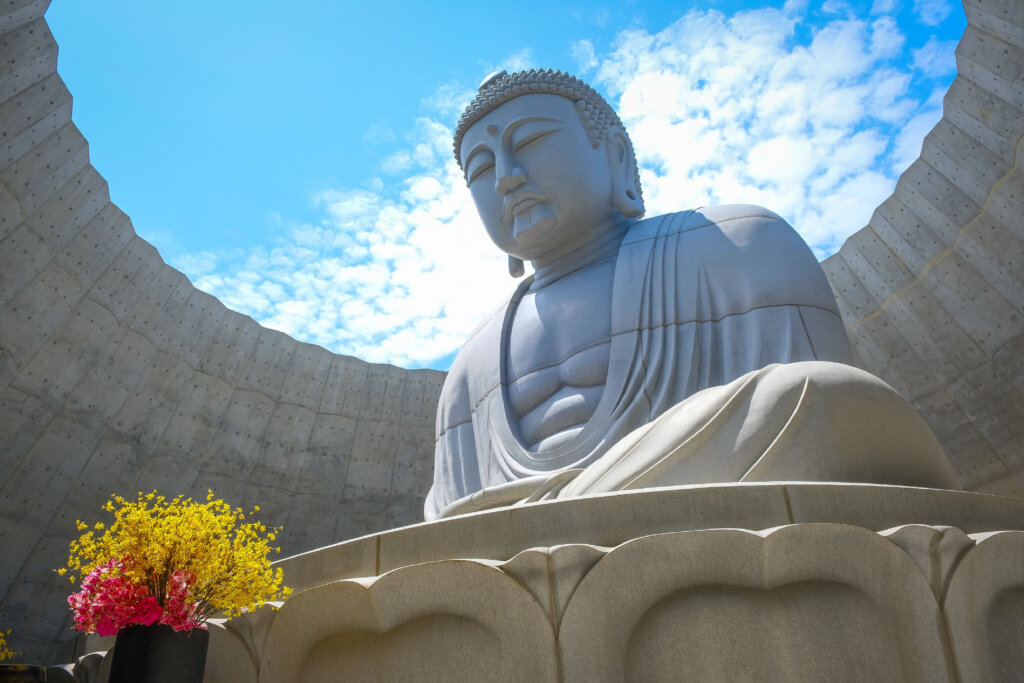
There is an impressive lineage of Zen writers that that have commented on the buddha nature teachings. Dōgen (1200–1253), whose instructional lectures were collected in his Shōbōgenzo, is one such Japanese thinker and practitioner whose writings on buddha nature have been published in numerous volumes. For example, Dōgen made the controversial and insightful decision to translate the above passage from the Chinese edition of the Mahāparinirvāṇa Sūtra as, “Living beings all are buddha nature.” Many other translations simply state that all beings have Buddha nature. Take a peek at the unique perspective Dōgen provides on buddha nature in his commentary on the above passage from the Mahāparinirvāṇa Sūtra found in his Treasury of the True Dharma Eye,
Know that the are of all are buddha nature is beyond are and are not. All are are the buddha words, the buddha tongue. They are the eyeball of buddha ancestors and the nostrils of patched-robed monks. The words all are are not limited to embryonic beings, original beings, inconceivable beings, or any other kind of beings. Furthermore, they do not mean causal beings or imaginary beings. All are are free from mind, object, essence, or aspects. This being so, the body, mind, and environs of Living beings all are [buddha nature] are not limited to the increasing power of action, imaginary causation, things as they are, or the practice realization of miraculous powers.
Such excerpts serve to guide readers toward a more complete understanding of the unique position Dōgen takes when addressing buddha nature. In the remainder of the chapter, difficult points are introduced in relation to this topic such as: the scope of buddha nature and its interconnectedness to living and inanimate beings, buddha nature and the importance of paradox and kōan practice, and narratives that colorfully illustrate Dōgen’s own journey of realization. His commentaries are included in various titles by Shambhala Publications such as the Treasury of the True Dharma Eye, Zen Enlightenment, Rational Zen, and The Essential Dōgen.
Works on Buddha Nature from the Zen Traditions
A presentation of Zen Buddhism in old Korea, this book is a window to the teachings of the fourteenth-century Zen master known as T’aego. Enjoy this translation of a direct and authentic account of Korean Zen Buddhism.
Enlightenment Unfolds is a sequel to Kaz Tanahashi's previous collection, Moon in a Dewdrop, which has become a primary source on Dogen for Western Zen students. Enlightenment Unfolds presents even more of the incisive and inspiring writings of this seminal figure, focusing on essays from his great life work, Treasury of the True Dharma Eye, as well as poems, talks, and correspondence, much of which appears here in English for the first time. Read More
In this collection of essays on Buddhist meditation, a variety of the traditions represented by teachers from China, Japan, and Korea, present the depth of “pure, clear meditation.” Zazen, as it is known in the Zen traditions, aims to capture the essence of traditional Buddhist meditation, and it is concisely presented here through various teacher’s perspectives.
Taken from personal correspondences he would have with his student, this book presents Zen Master Seung Sahn from the perspective of his most intimate teachings. Seung Sahn received hundreds of letters per month, and some of the best are included here with his personal and enlightened responses to issues surrounding work, relationships, suffering, and the teacher-student relationship.
Zen has often been portrayed as being illogical and mystifying, even aimed at the destruction of the rational intellect. These new translations of the thirteenth-century Zen master Dōgen—one of most original and important Zen writers—illustrate the rational side of Zen, which has been obscured through the centuries, tainting people's understanding of it.
The Zen tradition has created a huge body of writings, and the writings associated with the so-called Five Houses of Zen are widely considered to be foremost in importance. These Five Houses were not schools of Zen but were styles of teaching represented by the most outstanding masters in Zen history. Many of the writings of these great masters are translated here for the first time.
This book is a simple, exhaustive—and often hilarious—presentation of the essence of Zen by Master Seung Sahn, a modern Zen Master of considerable renown. In his many years of teaching throughout the world Master Sahn has become known for his ability to cut to the heart of Buddhist teaching in a way that is strikingly clear, yet free of esoteric and academic language. In this book, he presents the basic teachings of Buddhism and Zen in a way that is wonderfully accessible for beginners—yet rich with stories, insights, and personal experiences that will also benefit long-time students of meditation.
Within Zen Enlightenment the renowned scholar Heinrich Dumoulin traces the development of Zen and the concept of enlightenment from its origins in India through its development in China to its fruition in Japan. With a special emphasis on the historical path Zen has followed, the development of koan practice, and the Japanese Zen master Dōgen, Heinrich presents in a fresh way the enlightenment experiences of a variety of contemporary Zen practitioners.
Below, Paula Arai, author of Painting Enlightenment, reads an original poem to accompany the painting, “Do Ants Have Buddha-Nature?”, by Iwasaki Tsuneo. Painting Enlightenment is a beautiful exposition on a collection of paintings by Tsuneo illustrating the profound meaning of the Heart Sutra.
Buddha Nature and Tibetan Buddhism
Since the perfect buddhakaya radiates,
Since suchness is undifferentiable,
And because of the disposition,
All beings always possess the buddha heart.
—When the Clouds Part (Uttaratantrashastra)
translated by Karl Brunnhölzl
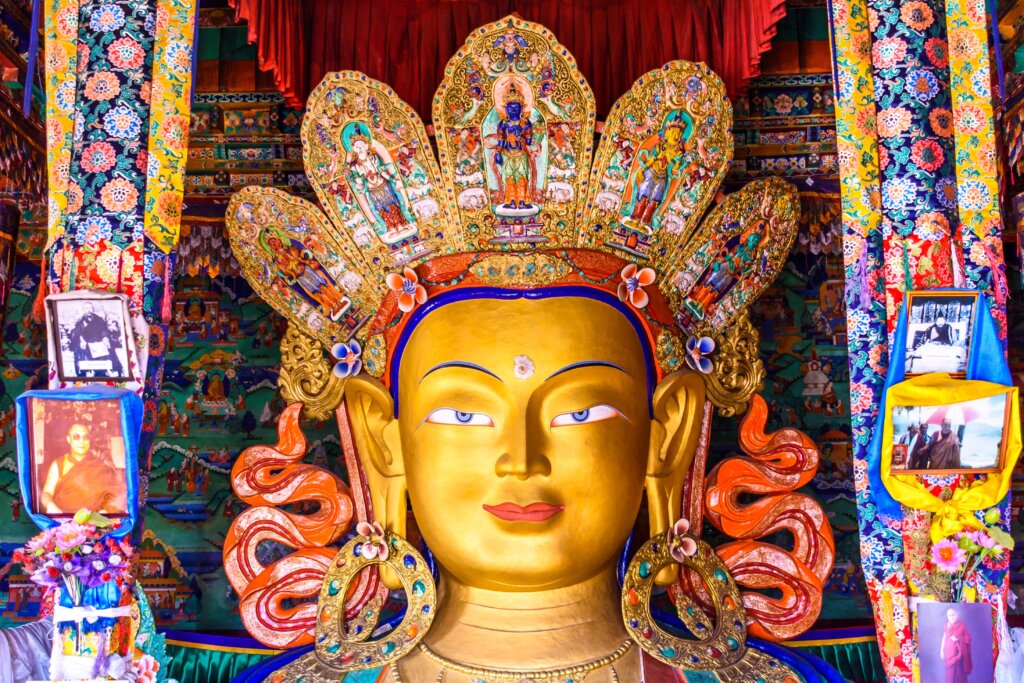
Although many of the great Tibetan Buddhist scholars and practitioners share the same root lineage, the various schools of Tibetan Buddhism eventually developed subtle philosophical differences with respect to buddha nature. There are many ways that the Tibetan traditions developed to systematically teach about buddha nature. For example, the highly systematized Tibetan traditions held unique philosophical positions regarding the usefulness of conceptual activity, sūtrayāna and mantrayāna supports, and rangtong (“empty of self”) and shentong (“empty of other”) approaches to buddha nature.
The differences in views on buddha nature in Tibetan Buddhism—Gampopa’s teachings on mahāmudrā, the emptiness-centered Gelug presentation, the Jonang ‘empty of other’ presentation by Venerable Dölpopa Sherab Gyaltsen (1292–1361), and the Nyingma position on Buddha-nature, help encapsulate the subtleties of the buddha nature teachings passed down through Tibetan Buddhism’s lineage of wisdom. The dialogue the ensues between these various viewpoints has led to the rich heritage of Tibetan Buddhist philosophy, preserving the highest and most subtle points of the Buddha’s teachings.
In Gampopa’s chapter on Buddha nature mentioned above, he quotes from Maitreya’s Ornament for the Mahāyāna (mdo sde rgyan),
Suchness, in all places is without distinction, but when it is refined, it is called “Buddhahood”. Therefore, it is that with which all beings are endowed.
If you ask for a reason that all beings can be shown to have Buddha-nature, these are the reasons: The dharmakāya, being emptiness, pervades all beings; suchness is indivisible; and it exists in the heritage of all sentient beings. Therefore, because of these three reasons, sentient beings possess Buddha-nature.
Works on Buddha Nature From the Kagyu Tradition
Known for his mastery of teachings across sectarian lines, his treatises on medicine and astrology, and his work as spiritual advisor to the last Yuan emperor of China, Rangjung Dorje (1284–1339) is considered one of the most important and influential figures in Tibetan Buddhist history. First recognized as a tulku, or reincarnated Buddhist master, at the age of five, Rangjung Dorje became a major Kagyu lineage holder and instituted the Tibetan system of reincarnation-based inheritance that led to the formation of important lineages of tulkus such as the Dalai Lamas.
Nāgārjuna's works sit at the heart of Mahāyāna Buddhist thought and practice, but he was renowned in Asia not only for his Madhyamaka work, but also his poetic collection of praises, most famously In Praise of Dharmadhatu. This book explores the scope, contents, and significance of Nāgārjuna’s scriptural legacy in India and Tibet, focusing primarily on this seminal work. The translation of Nāgārjuna’s hymn to buddha nature—here called dharmadhatu—shows how buddha nature is temporarily obscured in the experience of ordinary sentient beings, gradually uncovered through the path of bodhisattvas, and finally revealed in full bloom as buddhahood. Included is a translation of the text’s earliest and most extensive commentary by the Third Karmapa, Rangjung Dorje (1284–1339), supplemented by relevant excerpts from all other available commentaries.
Synthesizing Yogacara Madhyamaka and the classical teachings on buddha nature, this superb collection of writings on buddha nature by the Third Karmapa Rangjung Dorje (1284–1339) focuses on the transition from ordinary deluded consciousness to enlightened wisdom, the characteristics of buddhahood, and a buddha's enlightened activity. Rangjung Dorje not only shows that these teachings do not contradict each other but also that they supplement each other and share the same essential points in terms of the ultimate nature of mind and all phenomena. For those practicing the sūtrayāna and the vajrayāna in the Kagyu tradition, what these texts describe can be transformed into living experience.
On Buddha Essence: A Commentary on Rangjung Dorje's Treatise
by Khenchen Thrangu Rinpoche
According to Tibetan Buddhist tradition, human beings' true nature, or buddha essence, is the foundation from which all wisdom develops. In order to discover our buddha essence, the meditator needs to know how to meditate correctly and must properly understand the reasons for practicing meditation. Khenchen Thrangu—with clarity, warmth, and humor— explains buddha essence and how to discover it in ourselves by drawing on a classical text of the Kagyu lineage by Rangjung Dorje (the third Karmapa).
The Treasury of Knowledge: Book Six, Part Three
$44.95 - Hardcover
Translated by Elizabeth M. Callahan
Frameworks of Buddhist Philosophy presents a study of the themes and subtle philosophies developed over thousands of years of Buddhist composition. Written by the leading Tibetan scholar of the nineteenth century, Jamgön Kongtrül Lodrö Tayé, this work provides a brilliant overview of the development of Buddhism’s three vehicles and four philosophical systems.
Featured Online Course: Glimpses of Mahamudra
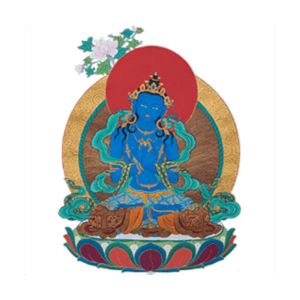
Mahamudra is a meditation tradition within tantric Buddhism that points to the nature of awareness itself, elevating our ordinary perception to the level of the sacred. In this view, all experiences arise from a mind that is naturally vast, empty, and luminous. In this online course, esteemed Buddhist teacher and editor Judith Lief takes us on a journey through the mahamudra teachings of Chögyam Trungpa Rinpoche as presented in his Profound Treasury of the Ocean of Dharma.
Using video recorded during a nine-day retreat, we’ll begin with a deep dive into shamatha-vipashyana meditation—the practice that builds our capacity for experiencing reality directly and completely. We’ll study the hinayana and mahayana—the foundational teachings of the Buddhist path that give us the tools to cultivate gentleness, wisdom, and compassion. We’ll discuss the importance of the heart-opening quality of devotion and the student-teacher relationship in entering the vajrayana. Finally, Lief will guide us in a series of practices and contemplations to glimpse the inherent, sky-like nature of the mind as clear, brilliant, and joyful.
Nyingma Texts that Emphasize Buddha Nature
The Precious Treasury of the Fundamental Nature
By Longchenpa
By Khangsar Tenpa'i Wangchuk
Translated by Padmakara Translation Group
Modern scholar and Nyingma master Khangsar Tenpa’i Wangchuk composed this first and only commentary on the fourteenth-century Buddhist master Longchenpa’s essential text, The Precious Treasury of the Fundamental Nature. The root text establishes the definitive view of the secret class of pith instructions of Dzogchen, the Great Perfection. Tenpa’i Wangchuk’s word-commentary elucidates the nature of phenomena adhering closely to the internal structure of Longchenpa’s verses, clearly presenting the four vajra principles of the nature of phenomena: nonexistence, evenness, spontaneous presence, and single nature.
The Padmakara Translation Group has provided a clear and fluid new translation of Longchenpa’s root text. The commentary by Khangsar Tenpa’i Wangchuk is here translated for the first time, commencing an extended project to render his entire collected works in English. This is an invaluable resource for students of Buddhism who wish to deepen their understanding of the nature of mind and phenomena as presented in the Great Perfection tradition.
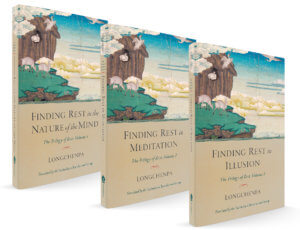
Longchenpa’s classic Buddhist manual for attaining liberation teaches us how to familiarize ourselves with our most basic nature—the clear, pristine, and aware mind. Written in the fourteenth century, this text is the first volume of Longchenpa’s Trilogy of Rest, a work of the Tibetan Dzogchen tradition.
Finding Rest in the Nature of Mind, Volume I is the profound and comprehensive presentation of the Buddhist view and path, combining the scholastic expository method with direct pith instructions designed for yogi practitioners.
Finding Rest in Meditation establishes the view of the Buddhist path generally, and specifically that of the teachings of the Great Perfection. It outlines the main points of meditation, namely, where one should meditate, what qualities a practitioner should possess and develop, and what should be practiced.
Finding Rest in Illusion describes in detail the conduct of those who have stabilized their recognition of the nature of the mind and how to apply the Buddhist view when relating to ordinary appearances. Drawing extensively from classic Buddhist works, the author uses well-known examples of illusion found throughout Mahāyāna literature to illustrate the illusory nature of both saṃsāra and nirvāṇa, thus revealing their ultimate nondual nature. This is an invaluable manual for any genuine student of Buddhism who wishes to truly find rest through the path of the Great Perfection.
Buddha Nature Teachings from Dolpopa and the Jonang Tradition
One of the only books about the controversial Buddhist master of Tibet, Dölpopa Sherab Gyaltsen (1292–1361). Dölpopa emphasized two contrasting definitions of the Buddhist theory of emptiness. He described relative phenomena as empty of self-nature, but absolute reality as only empty of other (i.e. relative) phenomena. He further identified absolute reality as the buddha nature or eternal essence present in all living beings. This view of an "emptiness of other," known in Tibetan as shentong, is Dölpopa's enduring legacy.
Jonang: The One Hundred and Eight Teaching Manuals
$39.95 - Hardcover
In this volume, Kongtrul expands on The One Hundred and Eight Guidebooks, a collection of teaching manuals compiled by the sixteenth-century Tibetan master Kunga Drolchok, adding Indic source texts, Tibetan antecedents, and later interpretations. Though compiled by a Jonangpa abbot and transmitted by the Jonang tradition, these teaching manuals are actually drawn from the Kadam, Sakya, Kagyu, and, to a lesser extent, Nyingma traditions. They are succinct and impart practical wisdom, as transmitted by key figures like Kunga Chogdrub and Lowo Khenchen Sonam Lhundrub. Gyurme Dorje, the translator, provides extensive notes and helpful context throughout. The resulting volume preserves and integrates the diverse lineages of Tibetan Buddhism while providing useful advice to practitioners.
Jonang is part of Jamgön Kongtrul the Great's eighteen volume collection known as The Treasury of Precious Instructions. For more information on his work see the Treasury of Precious Instructions.
Masters on the Buddha Nature Tradition from the Lives of the Masters Series
Maitripa: India's Yogi of Nondual Bliss
Maitripa (986–1063) is one of the greatest and most influential Indian yogis of Vajrayana Buddhism. The legacy of his thought and meditation instructions have had a profound impact on Buddhism in India and Tibet, and several important contemporary practice lineages continue to rely on his teachings.
Early in his life, Maitripa gained renown as a monk and scholar, but it was only after he left his monastery and wandered throughout India as a yogi that he had a direct experience of nonconceptual realization. Once Maitripa awakened to this nondual nature of reality, he was able to harmonize the scholastic teachings of Buddhist philosophy with esoteric meditation instructions. This is reflected in his writings that are renowned for evoking a meditative state in those who have trained appropriately. He eventually became the teacher of many well-known accomplished masters, including Padampa Sangyé and the translator Marpa, who brought his teachings to Tibet.
Drawing on Maitripa’s autobiographical writings and literary work, this book is the first comprehensive portrait of the life and teachings of this influential Buddhist master. Klaus-Dieter Mathes also offers the first complete English translation of his teachings on nonconceptual realization, which is the foundation of Mahamudra meditation.
Xuanzang: China's Legendary Pilgrim and Translator
In the fall of 629, Xuanzang (600–662), a twenty-nine-year-old Buddhist monk, left the capital of China to begin an epic pilgrimage across the country, through the deserts of Central Asia, and into India. His goal was to locate and study authentic Buddhist doctrine and practice, then bring the true teachings back to his homeland. Over the course of nearly seventeen years, he walked thousands of miles and visited hundreds of Buddhist monasteries and monuments. He studied with the leading teachers of his day and compiled a written account of his travels that remains a priceless record of premodern Indian history, religion, and culture. When Xuanzang finally returned to China in 645, he brought with him a treasure trove of new texts, relics, and icons. This transmission of Indian Buddhist teachings to China, made possible by Xuanzang’s unparalleled vision and erudition, was a landmark moment in the history of East Asian Buddhism.
As with many great pre-modern religious figures, the legends surrounding Xuanzang’s life have taken on lives of their own. His story has been retold, reshaped, and repurposed by generations of monastics and laypeople. In this comprehensive and engaging account, Benjamin Brose charts a course between the earliest, most reliable accounts of Xuanzang’s biography and the fantastic legends that later developed, such as those in the classic Chinese novel Journey to the West. Xuanzang remains one of the most consequential monks in the rich history of Buddhism in East Asia. This book is an indispensable introduction to his extraordinary life and enduring legacies.
Online Articles, Excerpts and other Resources Related to Buddha Nature
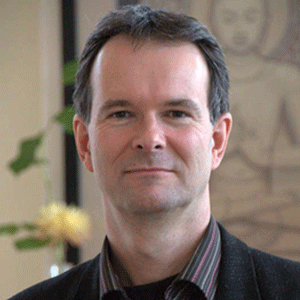
The Five Maitreya Texts: The "Zip Files" of the Mahāyāna
The five works that the Tibetan tradition ascribes to Maitreya resemble zip files that contain all the profound and vast topics of the Buddhist teachings. In their traditional order: The Ornament of Clear Realization comments on the emptiness taught in the Prajnaparamita Sutras and on what happens in the minds of bodhisattvas familiarizing themselves with emptiness on the paths and bhumis. Read More
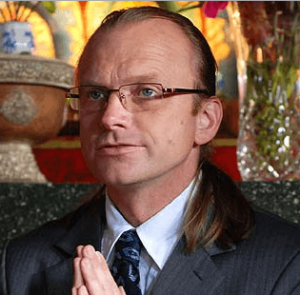
Translating the Maitreya Treatises: An Interview with Thomas Doctor
We recently interviewed Thomas Doctor, a translator on the Dharmachakra Translation Committee, about the importance of their recent translations of the Maitreya texts and commentaries. Read More
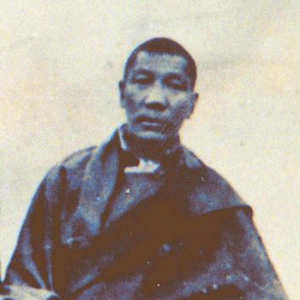
Khenpo Shenga (1871–1927) wrote commentaries on all 13 texts.
The Thirteen Core Indian Buddhist Texts: A Reader's Guide
There are thirteen classics of Indian Mahayana philosophy, still used in Tibetan centers of education throughout Asia and beyond, particularly the Nyngma tradition, with overlap with the others. They cover the subjects of vinaya, abhidharma, Yogacara, Madhyamika, and the path of the Bodhisattva. They are some of the most frequently quoted texts found in works written from centuries ago to today. Below is a reader's guide to these works.

